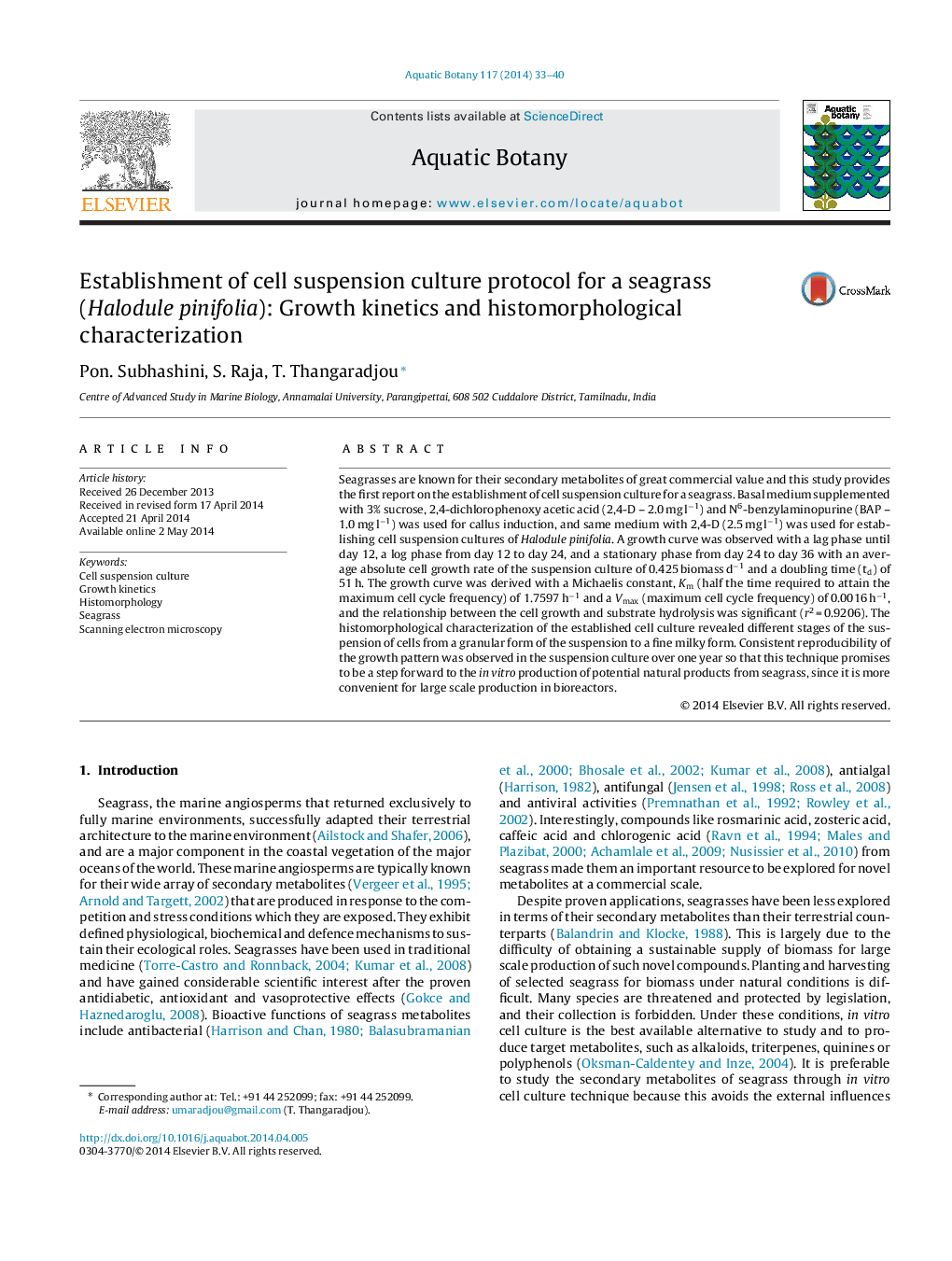| Article ID | Journal | Published Year | Pages | File Type |
|---|---|---|---|---|
| 4527831 | Aquatic Botany | 2014 | 8 Pages |
Abstract
Seagrasses are known for their secondary metabolites of great commercial value and this study provides the first report on the establishment of cell suspension culture for a seagrass. Basal medium supplemented with 3% sucrose, 2,4-dichlorophenoxy acetic acid (2,4-D - 2.0 mg lâ1) and N6-benzylaminopurine (BAP - 1.0 mg lâ1) was used for callus induction, and same medium with 2,4-D (2.5 mg lâ1) was used for establishing cell suspension cultures of Halodule pinifolia. A growth curve was observed with a lag phase until day 12, a log phase from day 12 to day 24, and a stationary phase from day 24 to day 36 with an average absolute cell growth rate of the suspension culture of 0.425 biomass dâ1 and a doubling time (td) of 51 h. The growth curve was derived with a Michaelis constant, Km (half the time required to attain the maximum cell cycle frequency) of 1.7597 hâ1 and a Vmax (maximum cell cycle frequency) of 0.0016 hâ1, and the relationship between the cell growth and substrate hydrolysis was significant (r2 = 0.9206). The histomorphological characterization of the established cell culture revealed different stages of the suspension of cells from a granular form of the suspension to a fine milky form. Consistent reproducibility of the growth pattern was observed in the suspension culture over one year so that this technique promises to be a step forward to the in vitro production of potential natural products from seagrass, since it is more convenient for large scale production in bioreactors.
Related Topics
Life Sciences
Agricultural and Biological Sciences
Aquatic Science
Authors
Pon. Subhashini, S. Raja, T. Thangaradjou,
